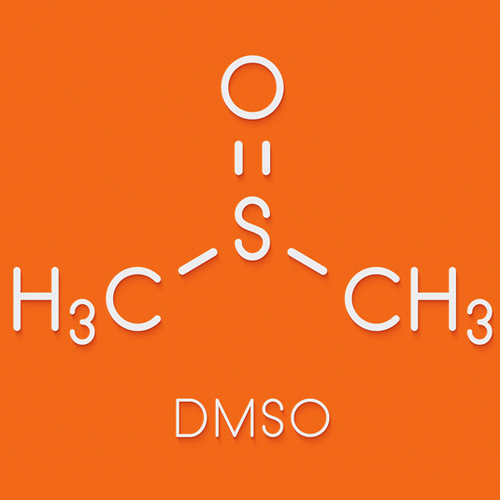
Background
DMSO helps medicines get through the skin and can affect proteins, carbohydrates, fats, and water in the body.
People use DMSO for bladder inflammation (interstitial cystitis), limb pain that usually occurs after an injury, and leakage of an IV drug from the vein into surrounding skin and tissue. It is also used for osteoarthritis, bed sores, stomach ulcers, and many other conditions, but there is no good scientific evidence to support most of these other uses.
Don't confuse DMSO with Methylsulfonylmethane (MSM). These are not the same.
Safety Safety definitions
When applied to the skin: Non-prescription DMSO is possibly unsafe. Some non-prescription DMSO products might be industrial grade. These aren't intended for human use and can contain impurities that can cause health issues. DMSO is easily absorbed through the skin, so it can carry these impurities into the body. Side effects might include blistering and burning.
When applied inside the bladder: Prescription DMSO is likely safe. Don't use DMSO products that are not prescribed by a healthcare professional.
Special Precautions & Warnings:
Pregnancy and breast-feeding: There isn't enough reliable information to know if DMSO is safe to use when pregnant or breast-feeding. Stay on the safe side and avoid use.Certain blood disorders. Injecting DMSO by IV might cause red blood cells to break down. This might be a problem for people with certain blood disorders. DMSO might make these conditions worse.
Kidney problems: DMSO might harm the kidneys. Check with a healthcare provider before using DMSO if you have kidney problems.
Liver problems: DMSO might harm the liver. Check with a healthcare provider before using DMSO if you have liver problems.br/>
Effectiveness
- Painful bladder syndrome (interstitial cystitis). DMSO is an FDA-approved product for the treatment of this condition. Washing the bladder with DMSO improves some symptoms, such as pain.
- Limb pain that usually occurs after an injury (complex regional pain syndrome). Applying DMSO cream to the skin seems to improve pain in people with this condition.
- Leakage of intravenous (IV) drug from the vein into surrounding skin and tissue (extravasation). Some chemotherapy drugs can cause skin and tissue damage if they leak from the vein. Applying DMSO to the skin might prevent further damage if this happens.
- Hardening of skin and connective tissue (scleroderma). Applying DMSO to the skin doesn't help treat symptoms of scleroderma.
Dosing & administration
Interactions with pharmaceuticals
Medications applied to the skin, eyes, or ears (Topical drugs)
Interaction Rating=Moderate Be cautious with this combination.
DMSO can sometimes increase how much medicine the body absorbs. Applying DMSO to the skin, eyes, or ears at the same time as applying medication can increase how much medicine the body absorbs. This might increase the effects and side effects of the medicine.
Medications for cancer (Platinum agents)
Interaction Rating=Moderate Be cautious with this combination.
Using DMSO to dissolve platinum agents onto the skin might reduce how well these drugs work to treat cancer. Examples of platinum agents include carboplatin, cisplatin, and oxaliplatin.
Medications that slow blood clotting (Anticoagulant / Antiplatelet drugs)
Interaction Rating=Moderate Be cautious with this combination.
DMSO might slow blood clotting. Taking DMSO along with medications that also slow blood clotting might increase the risk of bruising and bleeding.
Sulindac (Clinoril)
Interaction Rating=Moderate Be cautious with this combination.
Using DMSO with sulindac might reduce how well sulindac works to treat pain. There is also a concern that using DMSO with sulindac can increase the risk for nerve pain.
Various medications used for glaucoma, Alzheimer disease, and other conditions (Cholinergic drugs)
Interaction Rating=Moderate Be cautious with this combination.
DMSO can increase a chemical in the body called acetylcholine. Some medications that are used for glaucoma, Alzheimer disease, and other conditions, also increase acetylcholine levels. Taking DMSO with these medications might increase the chance of side effects.
Verteporfin (Visudyne)
Interaction Rating=Moderate Be cautious with this combination.
Using DMSO with verteporfin might reduce how well verteporfin works.


